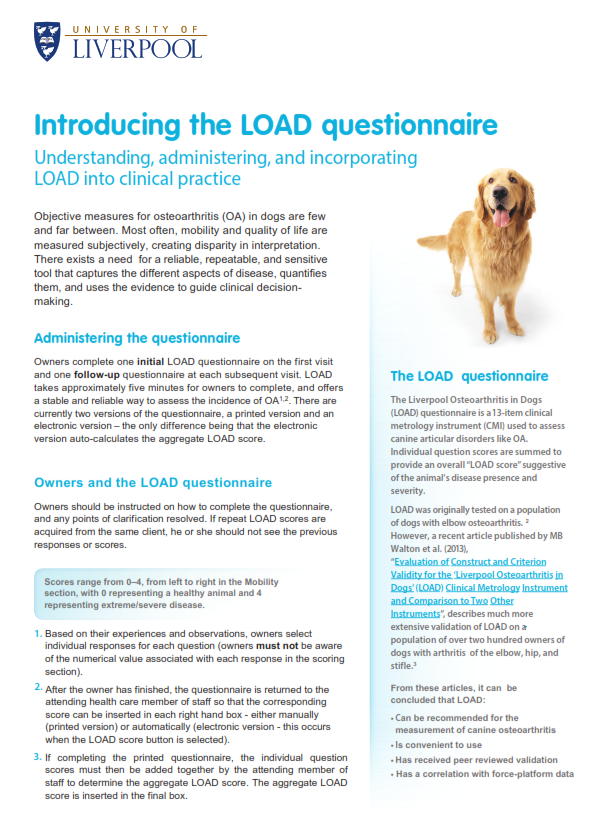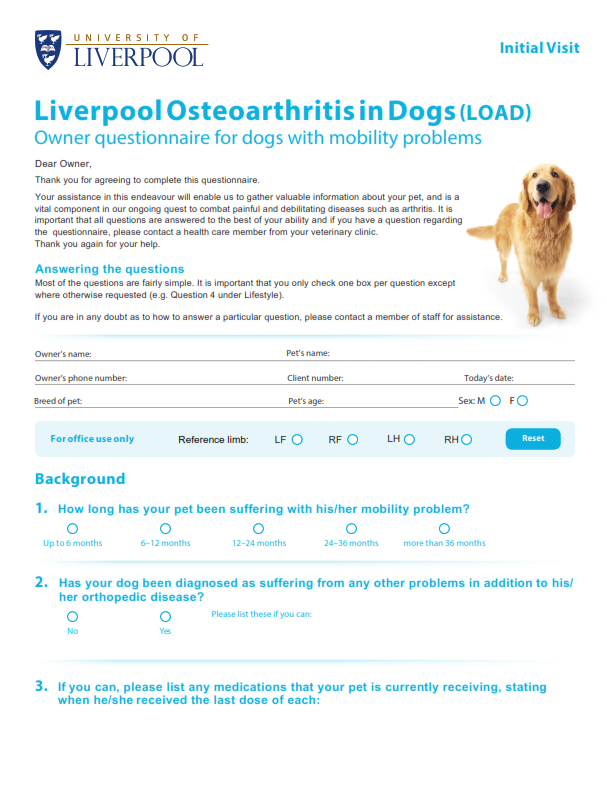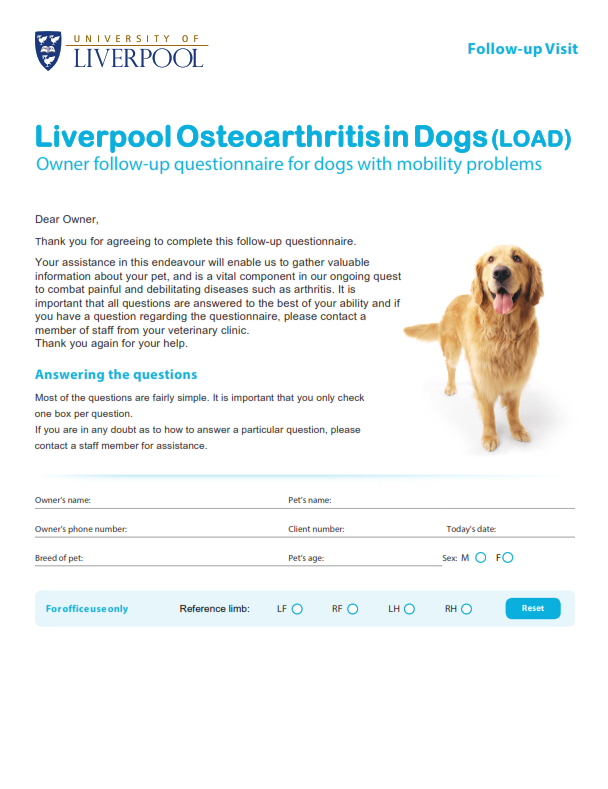The Liverpool Osteoarthritis in Dogs (LOAD) questionnaire is a 13-item clinical metrology instrument (CMI) used to assess canine articular disorders like OA. Pet owners fill out the questionnaire, and the scores for each question are summed to provide an overall “LOAD score”, which helps determine the presence and severity of articular disorders like OA. The LOAD questionnaire creates a reliable, repeatable and sensitive tool that captures the different aspects of OA, quantifies them and uses the evidence to guide clinical decision-making.
Accessing the LOAD Questionnaire



LOAD – Follow Up Consult
Interactive PDF to follow up on the signs and symptoms of canine OA.
Using the questionnaire
Owners complete one initial LOAD questionnaire on the first visit and one follow-up questionnaire at each subsequent visit. LOAD takes approximately five minutes for owners to complete and offers a stable and reliable way to assess the incidence of OA.
Based on their experiences and observations, owners select individual responses for each question (owners must not be aware of the numerical value associated with each response in the scoring section).
For editable digital submissions:
- Once the owner completes the assessment, they should return the digital form to the veterinarian.
- The veterinarian will then use the “LOAD Score” button, located in the “Office Use Only” section, to automatically calculate the total score based on the owner's responses.
For paper or non-editable digital submissions:
- The owner completes the assessment and returns the form to the veterinarian.
- The veterinarian manually enters the score for each question in the designated area on the right side of the form. Each question has five possible responses, leading to a score between 0 and 4.
- The veterinarian then sums these individual scores to determine the total score.
The final cumulative score ranges from 0 to 52 and is used to assess the severity of the dog's osteoarthritis.

Implementing LOAD in clinical practice:
Veterinarians are encouraged to use LOAD on individual clinical cases to assist their decision-making and clinical monitoring. The applications of LOAD in general clinical practice might include the identification of OA in dogs presented for other reasons, to assess the severity of disease at the outset of treatment, and to assess the response of patients to any treatment implemented.
Related Content



